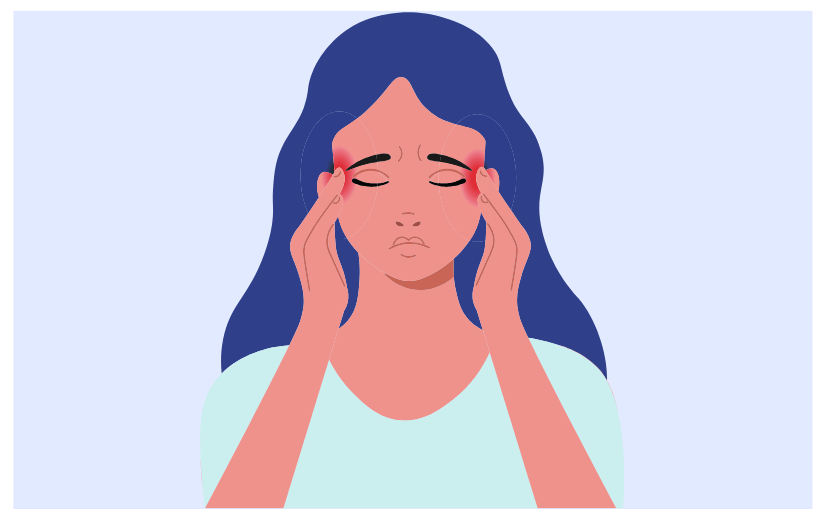Emotional Dysregulated Nervous System and its Role in Mental Health
Introduction

Emotional dysregulation is a complex condition that transcends mere mood fluctuations; it’s an intense, often overwhelming cascade of emotions that challenges the very notion of self-control and equilibrium within.
My journey through understanding this phenomenon illuminates a path that many tread in silence, grappling with feelings that seem to defy the bounds of “normal” emotional responses [3] [5].
Nervous system dysregulation, an underlying catalyst, disrupts the harmonious functioning of our body’s signaling networks, making the management of these unwieldy emotions even more daunting. This is not just a tale of internal turmoil but a reflection on the myriad experiences that shape our emotional landscape [7].
Delving deeper into this topic, I’ve come to realize the critical role played by a spectrum of factors in cultivating these emotional storms – from adverse childhood experiences that leave indelible marks on our psyche [1], to the relentless waves of anxiety and stress management that modern life demands [1].
The pervasive influence of social media, coupled with more idiosyncratic challenges like obsessive-compulsive disorder, frames a modern narrative around emotional dysregulation that warrants both reflection and action [1].
As we embark on this journey, let’s uncover the signs that signal dysregulation and the common threads that bind these experiences, all in a quest to navigate the tumultuous waters of our inner seas.
Table of Contents
Understanding the Nervous System
At the heart of our interactions with the world lies the nervous system, a labyrinthine network orchestrating a symphony of responses to both internal and external stimuli.
This intricate system is divided into two main parts: the central nervous system (CNS) and the peripheral nervous system (PNS) [12] [13] [14] [15] [16] [17].
The CNS, comprising the brain and spinal cord, serves as the command center, processing information and coordinating actions and responses [13].
Meanwhile, the PNS acts as the communication lines, extending from the CNS to the rest of the body, facilitating the relay of commands and sensations [13].
Central Nervous System (CNS)
- Brain: The epicenter of thought, memory, emotion, touch, motor skills, vision, breathing, temperature, hunger, and every process that regulates our body [15] [16] [17].
- Spinal Cord: A crucial conduit for transmitting messages between the brain and the body, enabling movement and sensory perception [15] [16] [17].
Peripheral Nervous System (PNS)
- Somatic Nervous System: Oversees voluntary movements and the transmission of sensory information [13].
- Autonomic Nervous System: Regulates involuntary functions like heartbeat, digestion, and breathing, further divided into the sympathetic and parasympathetic nervous systems [8] [11] [12].
Understanding this duality is paramount in recognizing how emotional dysregulation can emerge. The sympathetic nervous system primes us for ‘fight or flight,’ a response crucial in times of danger but potentially overwhelming when triggered too frequently or inappropriately [8].

Conversely, the parasympathetic nervous system encourages a state of calm, facilitating ‘rest and digest’ processes that are often disrupted in states of chronic stress or anxiety [8].
Through the lens of Polyvagal Theory, we begin to see how perceptions of safety and danger can profoundly affect our emotional and physical state, influencing our capacity to connect with others and navigate the world around us [9].
This foundation sets the stage for exploring the signs of a dysregulated nervous system and its impacts on our mental health and well-being.
Signs of a Dysregulated Nervous System
Navigating through the labyrinth of my own experiences, I’ve come to identify the myriad signs that whisper of a dysregulated nervous system. These manifestations, both subtle and overt, paint a vivid picture of the internal chaos that ensues when our body’s signaling networks falter.
Physical Symptoms:
- Chronic pain and illness, often persisting despite medical interventions [18].
- Disrupted sleep patterns, leading to daytime fatigue and difficulty concentrating [18].
- Digestive issues, signaling a compromised gut-brain axis [10] [19].
- Hormonal imbalances, affecting stress responses and leading to conditions like Rosacea and IBS [19].
Cognitive and Emotional Signs:
- Anxiety, PTSD, OCD, ADHD, depression, and poor memory, hinting at an overwhelmed system [11].
- Frequent feelings of overwhelm, stress, and irritability, coupled with attention and concentration issues [18].
- Extreme appetite changes and cravings driven by fluctuating stress hormones [19].

Behavioral Changes:
- Overreactions, snapping, and irritability, signaling an inability to modulate responses [18].
- Sensitivity to sensory stimuli, finding loud noises and big crowds overwhelming [18].
- Inappropriate behaviors including rage outbursts and being overly argumentative, reflecting the depth of dysregulation [11]
In the tapestry of these symptoms, the intricate connection between mind, body, and environment becomes starkly evident. Each sign, a thread in the larger weave of our being, underscores the profound impact of a dysregulated nervous system on our holistic health.
Common Causes Triggering Nervous System Dysregulation
In the labyrinth of my own understanding, I’ve come to recognize the multifaceted origins of nervous system dysregulation, a phenomenon as complex as the tapestry of life itself.
Psychological and Physical Triggers:
- Adverse Childhood Experiences (ACEs) have a profound impact, embedding a legacy of emotional turmoil that often cascades into adulthood, leading to a dysregulated nervous system [5] [18].
- Mental Health Conditions, including anxiety disorders, bipolar disorder, and obsessive-compulsive disorder, contribute significantly to emotional dysregulation, painting a picture of the internal chaos that ensues from such conditions [1].
- Neurodivergent Conditions like ADHD and autism spectrum disorder further complicate the landscape of emotional regulation, adding layers of complexity to the already intricate interplay of mind and body [1].
- Physical Factors, ranging from brain injuries to the subtle yet pervasive influence of lifestyle habits like inadequate sleep and poor diet, underscore the interconnectedness of our physical well-being and emotional state [18].
Environmental and Lifestyle Influences:
- Stressors and Toxins, from the air we breathe to the media we consume, silently weave their way into our lives, subtly nudging our nervous system into states of dysregulation [21] [18].
- Lifestyle Choices, including prolonged screen time and substance abuse, serve as daily reminders of the delicate balance we must maintain to foster a regulated nervous system [11].
Through this introspection, it becomes evident that the causes of nervous system dysregulation are as varied as the individuals it affects, each factor intertwining with the next in a complex dance of cause and effect [8][11][1][5][21][7][18].
Impact on Mental Health
In traversing the intricate landscape of emotional dysregulation, it’s imperative to recognize its profound impact on mental health. A dysregulated nervous system can manifest in a spectrum of mental health issues, each intertwining with our daily lives and relationships in complex ways:
Mental Health Conditions:
- Depression and Anxiety: Severe depression and anxiety are common, affecting our ability to function and maintain relationships [2] [3] [4].
- Panic and Sleep Issues: Panic attacks and sleep disturbances disrupt daily life, leading to exhaustion and poor concentration [7] [11].
- Behavioral Issues: Rage outbursts, passive aggression, and being argumentative reflect the struggle in managing emotions [11].

Exacerbated Symptoms:
- Self-Harm and Substance Abuse: High levels of shame and anger can lead to self-harm, excessive substance use, and suicidal thoughts [2] [3] [4].
- Interpersonal Conflicts: Difficulty in relationships and making poor life choices are indicative of the struggle to navigate social interactions [11].
Link to Other Disorders:
- Sensory and Autism Spectrum Disorders: Dysregulation can contribute to or exacerbate conditions like autism spectrum disorders and anxiety disorders, further complicating the mental health landscape [7].
Understanding these impacts provides a lens through which we can begin to comprehend the profound and far-reaching effects of a dysregulated nervous system on our mental well-being. It underscores the necessity of addressing the root causes and symptoms of dysregulation to foster healthier minds and relationships.
Strategies for Managing Dysregulation
In my pursuit of harmony within, I’ve discovered a constellation of strategies designed to gently guide the nervous system back to a state of equilibrium.
These methods, illuminated by both science and personal experience, form a mosaic of possibilities for those of us navigating the turbulent waters of emotional dysregulation.
1. Listening Therapies:
- Safe and Sound Protocol (SSP): A transformative listening therapy that aims to recalibrate the nervous system, fostering a sense of safety and reducing symptoms associated with emotional dysregulation [9].
- Integrated Listening System (Focus System): This multi-sensory approach combines music and movement to enhance brain-body coordination, supporting overall mental health and well-being [9].
2. Mind-Body Practices:
- Yoga, Tai Chi, and Qi Gong: These ancient practices promote inner peace and physical balance, offering a sanctuary for the mind and a rhythm for the body [22].
- Meditation and Mindfulness: By anchoring in the present moment, these practices strengthen neural pathways, facilitating a more grounded and centered response to life’s challenges [22] [23].
3. Lifestyle Adjustments:
- Nature Immersion: Whether it’s forest bathing or walking barefoot on natural terrain, reconnecting with the earth can significantly lower stress markers and nurture our inner calm [22].
- Journaling: The act of putting pen to paper allows for the release of pent-up emotions, offering clarity and a renewed perspective on the narratives that shape our lives [22].

Each of these strands, woven together, offers a tapestry of therapeutic interventions aimed at soothing the dysregulated symphony of our nervous system. Through a combination of listening therapies, mind-body practices, and intentional lifestyle adjustments, we embark on a journey toward reclaiming our internal equilibrium [9] [22] [23].
Conclusion
Through the journey of unpacking the complexities of emotional dysregulation and its profound impact on the nervous system, it becomes clear that understanding and addressing this condition is critical for our mental health and overall well-being.
The exploration of its signs, causes, and effects illuminates the intricate web of factors influencing our emotional landscape, underscoring the importance of acknowledging and navigating these turbulent waters with care and attention.
This insight not only enriches our comprehension of the challenges faced but also highlights the path towards potential healing and balance.

In essence, the strategies and insights shared offer a beacon of hope for those grappling with the storms of dysregulation.
By integrating informed approaches and fostering a greater awareness of the internal and external influences on our nervous system, we can embark on a transformative journey towards emotional regulation and resilience.
The call to action extends beyond individual healing, urging a collective shift towards understanding and compassion in the face of emotional dysregulation, paving the way for a more grounded and harmonious existence.

Reference
[1] – https://my.clevelandclinic.org/health/symptoms/25065-emotional-dysregulation
[2] – https://www.webmd.com/mental-health/what-is-emotional-dysregulation
[3] – https://www.sandstonecare.com/blog/emotional-dysregulation/
[4] – https://rogersbh.org/emotional-dysregulation-facts
[5] – https://en.wikipedia.org/wiki/Emotional_dysregulation
[6] – https://www.sciencedirect.com/topics/psychology/emotion-dysregulation
CTA: If you or someone you know is struggling with a dysregulated nervous system and its impact on mental health, reach out to a mental health professional .
They can provide the support and guidance needed to navigate this journey towards improved mental well-being. Remember, you have the power to take control of your mental health and live a fulfilling life.

